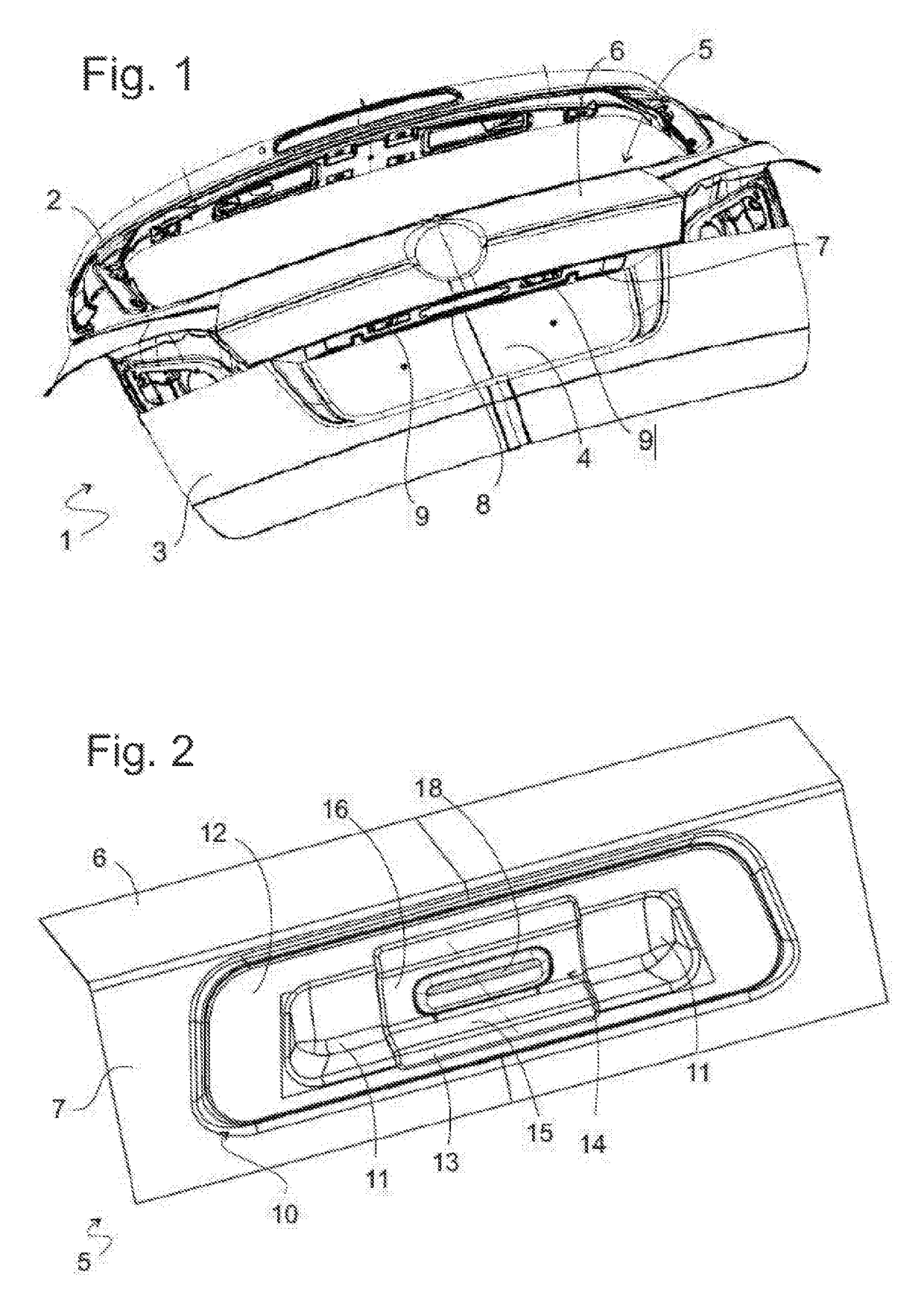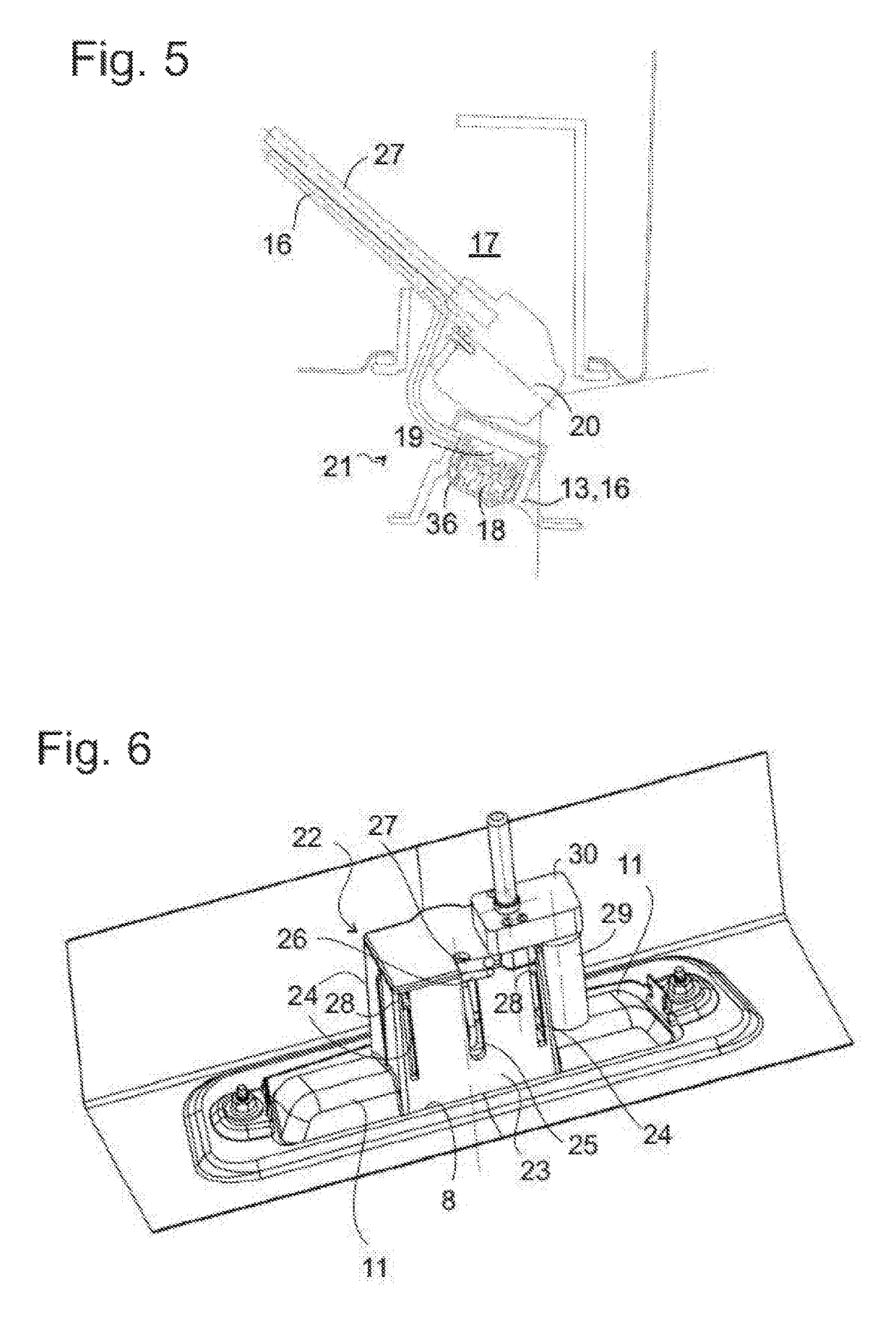Tailgate with reversing camera
- Summary
- Abstract
- Description
- Claims
- Application Information
AI Technical Summary
Benefits of technology
Problems solved by technology
Method used
Image
Examples
Embodiment Construction
[0021]The following detailed description is merely exemplary in nature and is not intended to limit the invention or the application and uses of the invention. Furthermore, there is no intention to be bound by any theory presented in the preceding background of the invention or the following detailed description.
[0022]FIG. 1 shows a tailgate 1 for a motor vehicle in wagon design. The upper part of the tailgate 1 is formed by a large window frame 2. In an outer panel 3 forming the lower part of the tailgate 1, a central indentation 4 for a number plate is formed. An outer skin element 5 facing the outer panel 3 has an angular cross section with an upper leg 6, which downwards adjoins the window frame 2. The outer skin element 5 joins the outer panel 3 on lateral ends on both sides of the central indentation 4 in a flush manner. A lower leg 7 of the outer skin element 5 forms an upper edge of the indentation 3 and in the closed position of the tailgate 1 is orientated approximately ho...
PUM
 Login to View More
Login to View More Abstract
Description
Claims
Application Information
 Login to View More
Login to View More - R&D
- Intellectual Property
- Life Sciences
- Materials
- Tech Scout
- Unparalleled Data Quality
- Higher Quality Content
- 60% Fewer Hallucinations
Browse by: Latest US Patents, China's latest patents, Technical Efficacy Thesaurus, Application Domain, Technology Topic, Popular Technical Reports.
© 2025 PatSnap. All rights reserved.Legal|Privacy policy|Modern Slavery Act Transparency Statement|Sitemap|About US| Contact US: help@patsnap.com



